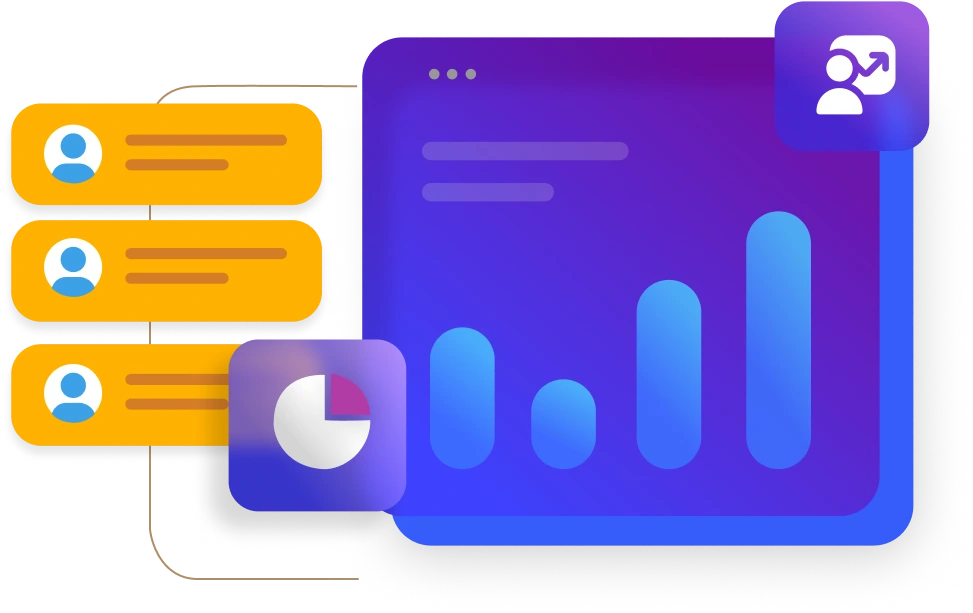How to Discover Which Target Demographic Will Respond to Your Ads

Who’s listening?
It may not seem like a fundamental question for most businesses. But when it comes to writing your ads, it may be the most important question you can ask.
After all, statistics bear that out. For example, traffic from email marketing campaigns has an average conversion rate of over 4%.
For organic search? 3.75%.
For display ads? 0.77%.
Clearly the source of your traffic matters. But you also have to consider what the source of your traffic says about your demographics.
See Your Potential ROI with leadpops
See what's possible. Fix it fast.
Understanding your target demographics won’t only give you more insights into the customer’s mindset, but will help you construct relevant landing pages.
And remember: the more landing pages you have, the more likely you are to convert.
That’s why business with over 40 landing pages tended to convert as many as 12 times the conversions of businesses with only 5-10 landing pages.
In other words, the more specifically you understand your audience, the better.
The more you understand your audience, the more you’ll be able to create landing pages that target their specific pain points.
There’s just one question remaining:
Book My FREE
Growth Strategy
Session
See what's possible. Fix it fast.

How in the heck are you supposed to figure out which target demographic best responds to your ads?
Here are a few ideas.
Creating Your First Test Campaign
First things first: you’re going to have to test.
After all, you don’t want your future advertising dollars to go to waste because you spent them blindly. That means you’re going to have to construct a campaign built around the concept of learning your audience from the very start.
Don’t worry. It’s not as complicated as it sounds.
See Your Potential ROI with leadpops
See what's possible. Fix it fast.
Creating a test campaign begins with running the proper analytics. Consider the following:
- Google Analytics running on your website is a must-have. It will help you analyze all the traffic that comes pouring in when your advertisements send you new visitors.
- A Facebook Advertising Pixel is essential if you’re going to advertise on Facebook. Not only will it help you measure the effectiveness of your ads but it will help you get a clearer picture of the demographics of your audience. If you’re still confused about how this works, see HootSuite’s guide on Facebook pixels.
- Create goals within Google Analytics to track your conversions. This will be integral to the process so you understand not only which demographics respond to your ads, but which demographics tend to show up more willing to engage with your website.
With the analytics in place, you’ll be ready to create a test campaign.
But wait. What exactly does a test campaign entail?
Remember the title of this post: we’re looking for a target demographic that will respond to your ads.
So that means we’re not simply on a reconnaissance mission here. We’re not just gathering data.
We also want to find out which demographics feel most compelled to click your ads and move forward to the rest of your site.
Book My FREE
Growth Strategy
Session
See what's possible. Fix it fast.

That means you’ll have to use a few different strategies:
- Create multiple ads targeted to specific demographics. Let these ads run with the same approximate sample size. You should already have an idea of which types of demographics might suit you best. Break these demographics down into “trial groups” to see which ones actually click on your ads most often.
- Let the campaigns run long enough. Remember, we want accuracy here. That means you’re going to have to wait long enough to get an adequate sample size of which demographics tend to engage with your ads.
- Run similar ads for the test campaign. After all, you’re going to want to make sure that it isn’t the differences in your ads that are driving different data sets for different demographics.
Once you’ve done that, you’ll then have to interpret the data.
Reading Advertising Data Correctly
With the proper analytics in place, you’ll have a set of data to work with after your initial test campaign.
Now the problem isn’t that you don’t know anything. It’s that you don’t know what to make of everything.
Here are a few tips for interpreting your data correctly:
See Your Potential ROI with leadpops
See what's possible. Fix it fast.
- If your data sets are similar across demographics, you may have to “zoom in” on particular performance indicators. For example, if you see that 2% of one demographic click your ads and 2% of another set do the same, you may have to find out which one arrives more ready and willing to convert. You can do that by analyzing your Google Analytics data.
- Double-check your advertising content. During the test campaign, you should have given each demographic similar content to click on. You want to be sure that the differences between demographics aren’t due to differences in the quality of your ads.
If you still find that there are no discrepancies between the different demographics, you may have to launch additional test campaigns with more specific tests to try and discern who’s going to be more likely to click on your ads.
For example, you may use a test campaign later on that targets specific demographics more clearly. You should write multiple ads in this case, as you’ll want to make sure you’re testing different advertising sets with similar strengths.
Making the Most of Your Data
If you find that one demographic set is far more likely to click on an ad than another, that could be good news; you can skip a lot of steps and focus on marketing to them specifically.
In this case, you may want to create specific advertising campaigns to target these demographics and begin drawing in their traffic before you do anything else.
Here are some things to consider if you want to ensure that you get the most from your new data sets:
Book My FREE
Growth Strategy
Session
See what's possible. Fix it fast.

- Create landing pages specifically targeted at the most-engaged demographics. For example, if you were a mortgage company and you found that young people in search of their first house were most likely to click on your ads, then you might create a set of landing pages designed with them in mind. Not only can this further optimize your results from them, but it can give you a better foundation from which to launch future advertising campaigns to this customer segment.
- Continue to optimize the campaigns of the less-engaged demographics. Other demographics that are underperforming don’t have to necessarily remain You may simply have to question why your ads aren’t engaging them in the first place. As you optimize your ads with them in mind and create specific campaigns for them—not to mention unique landing pages—you may find that you’re able to boost the overall engagement rates to rival those of your better-performing demographics.
Overall, you’ll find that it’s not only possible to learn which target demographic will most respond to your ads, but it’s possible to shore up your weaknesses with other demographics as well.
The key is to identify those areas in which you can continue to learn from your ads. Don’t just poke around in the dark. Track your data, begin each campaign with a goal, and continue to learn from your ads.
And don’t forget to sign up for a free trial of leadPops, either.



